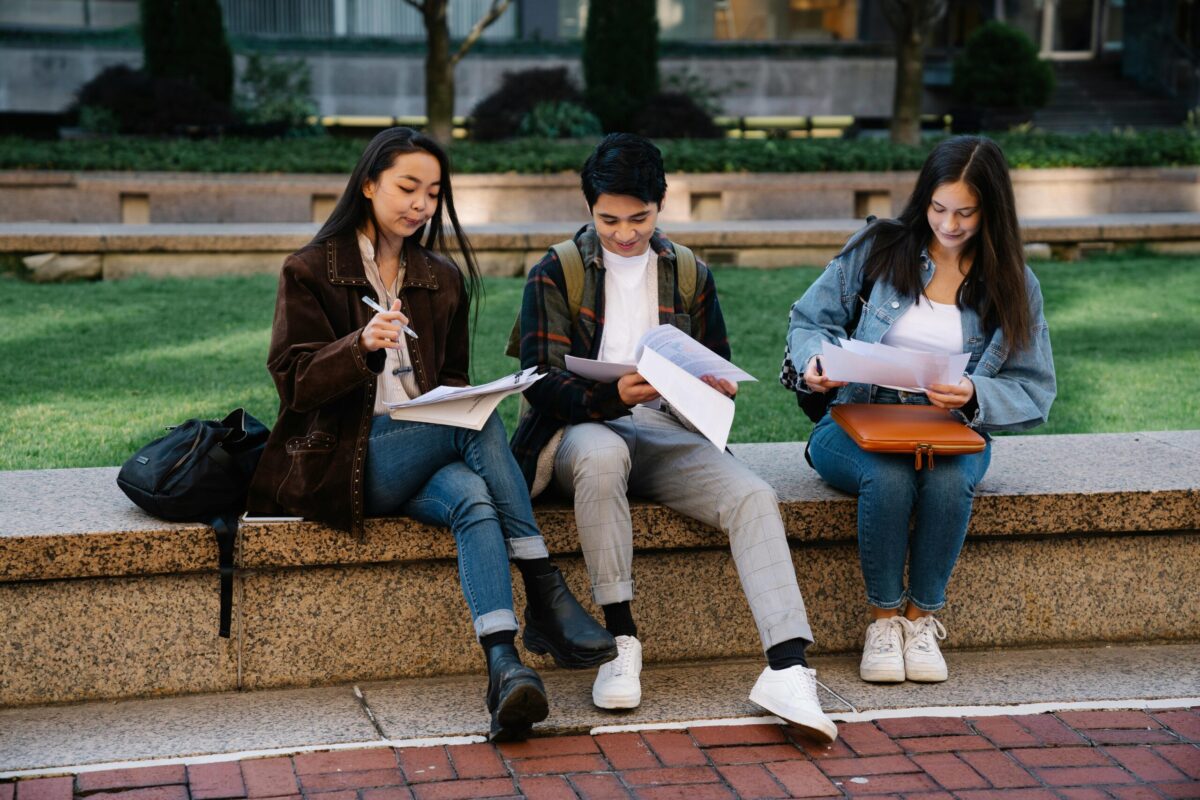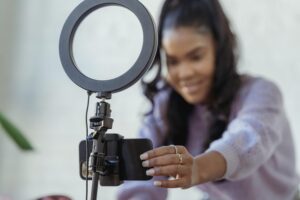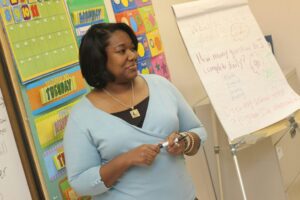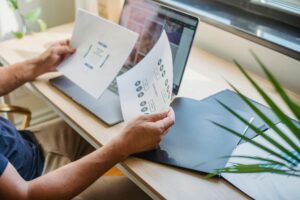Project Based Learning (PBL) is a teaching method that engages students in learning by solving real-world problems or creating meaningful products. PBL allows students to develop 21st century skills such as collaboration, communication, creativity, and critical thinking. PBL also fosters student autonomy, motivation, and ownership of their learning.
Here are some examples of project based learning prompts for middle school students in grades 6-8; they organized by grade level and subject area. Each example includes a driving question, a brief description, and some possible outcomes or products.
Grade 6: Language Arts
How can we create and publish our own newsletters?
Students learn about the features and styles of newsletter writing through creating and publishing their own newsletters. They choose a topic and a theme for their newsletters, such as school news, sports news, hobby news, etc. They research their topic using reliable and varied sources and cite them properly. They write their newsletters, using appropriate language, tone, and structure. They edit and revise their newsletters, using peer feedback and rubrics. They publish their newsletters online or print them out. They share their newsletters with their classmates or other readers.
Possible outcomes/products: Newsletters; online or print publications; feedback or evaluations.
Grade 6: Math
How can we create and sell our own board games?
Students learn about various math concepts such as fractions, decimals, percentages, probability, and statistics through creating and selling their own board games. They research different types of board games and the math skills involved in playing them. They design their own board games, following the criteria and constraints given. They test their games and collect feedback from their classmates or other students. They calculate the cost, price, and profit of their games and create a marketing plan.
Possible outcomes/products: Board games; feedback forms or surveys; cost, price, or profit calculations; marketing plans or materials; sales or profit reports.
Grade 6: Science
How can we design and test a roller coaster?
Students learn about the physics of motion, energy, and forces through designing and testing a roller coaster. They research different types of roller coasters and the factors that affect their speed, safety, and thrill. They use online simulators or physical materials to create their own roller coaster models, following the engineering design process. They test their models and collect data on their performance. They analyze and improve their designs based on the data and feedback.
Possible outcomes/products: Roller coaster models; data tables or graphs; analysis or improvement reports; presentations or videos to demonstrate and explain their designs.
Grade 6: Social Studies
How can we create a simulation of a civilization?
Students learn about the characteristics and achievements of different civilizations, such as ancient Egypt, Greece, Rome, China, etc. through creating a simulation of a civilization. They research different aspects and features of their chosen civilization, such as geography, government, religion, art, etc. They choose a format and a style for their simulation, such as a model, a map, a video game, etc. They write and organize their information, using historical evidence and sources. They include artifacts, images, or other media to enhance their simulation.
Possible outcomes/products: Simulation of a civilization; information; artifacts, images, or other media; presentations or videos to showcase their simulation.
Grade 7: Math
How can we create and solve a mystery using math clues?
Students learn about various math concepts and skills, such as algebra, geometry, logic, etc. through creating and solving a mystery using math clues. They choose a scenario and a plot for their mystery, such as a crime, a treasure hunt, a puzzle, etc. They create a series of math clues that lead to the solution of their mystery, using different levels of difficulty and formats. They exchange their mysteries with their classmates or other students and try to solve them, using math reasoning and strategies.
Possible outcomes/products: Mysteries; math clues; solutions; feedback or comments.
Grade 7: Math
How can we create and play a math escape room?
Students learn about various math concepts and skills, such as algebra, geometry, logic, etc. through creating and playing a math escape room. They research different types of escape rooms and how they use math to create puzzles, clues, and challenges. They design and create their own math escape room, using different materials and tools. They test and improve their math escape room, using feedback and rubrics. They exchange their math escape rooms with their classmates or other students and try to escape them, using math reasoning and strategies.
Possible outcomes/products: Math escape rooms; puzzles, clues, or challenges; feedback or rubrics; escape or completion reports.
Grade 7: Science
How can we create and test a water filter?
Students learn about the science and engineering of water quality and purification through creating and testing a water filter. They research different types of water filters and how they remove contaminants, such as sand, charcoal, cotton, etc. They design and build their own water filter, using recycled or low-cost materials. They test and improve their water filter, following the safety and ethical guidelines. They filter and analyze different water samples, such as tap water, rain water, pond water, etc. They collect and compare data on their water filter’s performance, such as clarity, pH, turbidity, etc.
Possible outcomes/products: Water filter; water samples; data tables or graphs; analysis or comparison reports; presentations or videos to demonstrate and explain their water filter.
Grade 7: Science
How can we create and launch a model rocket?
Students learn about the science and engineering of rockets and space exploration through creating and launching a model rocket. They research different types of rockets and the principles of aerodynamics, propulsion, and stability. They design and build their own model rockets, using online simulators or physical materials. They test and launch their rockets, following the safety and ethical guidelines. They collect and analyze data on their rockets’ performance, such as height, speed, distance, etc.
Possible outcomes/products: Model rockets; data tables or graphs; analysis or improvement reports; presentations or videos to demonstrate and explain their rockets.
Grade 8: Math
How can we create and use a math scavenger hunt?
Students learn about various math concepts and skills, such as geometry, measurement, logic, etc. through creating and using a math scavenger hunt. They research different types of scavenger hunts and how they use math to create clues, challenges, and puzzles. They design and create their own math scavenger hunt, using different materials and tools. They test and improve their math scavenger hunt, using feedback and rubrics. They exchange their math scavenger hunts with their classmates or other students and try to complete them, using math reasoning and strategies.
Possible outcomes/products: Math scavenger hunt; clues, challenges, or puzzles; feedback or rubrics; completion or win reports.
Grade 8: Math
How can we create and break codes using math?
Students learn about the concepts and methods of cryptography and coding through creating and breaking codes using math. They research different types of codes and ciphers and how they use math to encrypt and decrypt messages, such as substitution, transposition, Caesar, Vigenere, etc. They create their own codes and ciphers, using different math skills and tools. They exchange their coded messages with their classmates or other students and try to break them, using math reasoning and strategies.
Possible outcomes/products: Codes and ciphers; coded messages; solutions; feedback or comments.
Grade 8: Science
How can we create and test a solar oven?
Students learn about the science and engineering of solar energy and cooking through creating and testing a solar oven. They research different types of solar ovens and the principles of heat transfer, reflection, and insulation. They design and build their own solar oven, using recycled or low-cost materials. They test and improve their solar oven, following the safety and ethical guidelines. They cook and enjoy different foods, using their solar oven. They collect and analyze data on their solar oven’s performance, such as temperature, time, efficiency, etc.
Possible outcomes/products: Solar oven; food; data tables or graphs; analysis or improvement reports; presentations or videos to demonstrate and explain their solar oven.
Grade 8: Science
How can we create and test a model bridge?
Students learn about the science and engineering of bridges and structures through creating and testing a model bridge. They research different types of bridges and how they support loads, such as arch, beam, truss, suspension, etc. They design and build their own model bridge, using recycled or low-cost materials. They test and improve their model bridge, following the safety and ethical guidelines. They measure and compare the strength, stability, and efficiency of their model bridge, using different weights, forces, and materials.
Possible outcomes/products: Model bridge; weights, forces, or materials; data tables or graphs; analysis or improvement reports; presentations or videos to demonstrate and explain their model bridge.
By integrating the project-based learning (PBL) examples provided—or adapting them to better suit your needs—you can empower students to actively engage with real-world challenges and complex inquiries. This approach not only facilitates knowledge acquisition but also cultivates vital life skills, including problem-solving, critical thinking, and collaboration.
Through PBL, we can create an environment where learning is synonymous with discovery, and education is a collaborative journey towards a more informed and capable generation.







